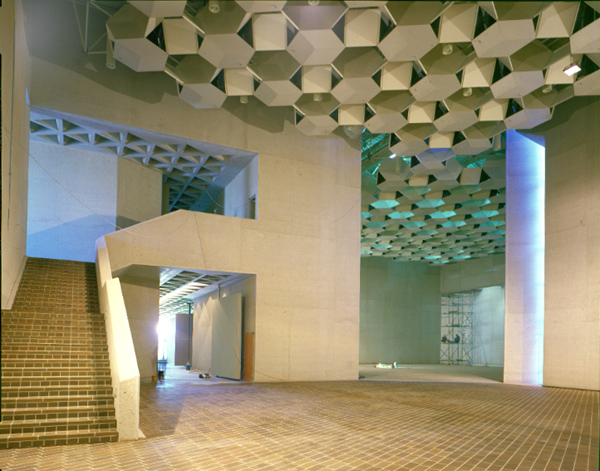About us
The building
 National Gallery of Australia
near completion, rear view, c. late 1980
National Gallery of Australia
near completion, rear view, c. late 1980
In 1967 Prime Minister Harold Holt announced that the government would build an Australian National Gallery in Canberra to house the National Collection. Following Cabinet approval in 1970, the winning architect, Colin Madigan, was appointed to develop the complex that included the High Court of Australia on King Edward Terrace.
The major challenge in designing the National Gallery of Australia was how best to display works of art to the public, while conserving and storing these works in absolute physical and environmental security. A further challenge was to accommodate curatorial, administrative and technical staff, and provide extensive facilities for the gallery's educative, scholarly and public relations functions. James Sweeney, Director of the Museum of Fine Arts Houston, was employed as a consultant and proposed a plan based on a 'spiral' progression of galleries, of contrasting sizes and heights, allowing the greatest flexibility in the arrangement of exhibitions. Sweeney emphasised that viewers should not be distracted from the works of art by outside views through windows.
 Entrance level galleries before the installation of art works, showing the staircase leading to the Australian art galleries, November 1981
Entrance level galleries before the installation of art works, showing the staircase leading to the Australian art galleries, November 1981
The galleries are arranged on three levels. The entrance level is composed of large almost cathedral like rooms. These rooms are used for the exhibition of the Gallery's Indigenious art collection, International art collection and major focus exhibitions. The Gallery's upper level contains a series of more intimate galleries with parquetry floors that are used to display the Gallery's collection of Australian art as well as smaller focus exhibitions of Austalian works. The lower level of the gallery originally designed as a sculpture gallery with a greater proportion of natural light also has high ceilings that give a sense of monumentality. The building's north-facing section houses the public refreshment and rest areas, the Staff Lounge and the Members Lounge. While catching the winter sun, these areas also provide spectacular views of the Sculpture Garden, Lake Burley Griffin, Mount Ainslie and the City Centre.
Much of the building is made of reinforced bush-hammered concrete — an example of Madigan's philosophy that concrete has as much integrity as stone. Concrete slabs are the main facings for walls; they are also the major reinforcing structural component, enclosing and camouflaging numerous service shafts and ducts. Floor coverings vary: there is quarry-split slate in the lower level galleries. large brick tiles in the entrance level galleries, and wood (tulip oak) in the upper level galleries.
Facts about the building
- The Gallery's floor area is approximately 20,573 square metres; approximately 7,000 square metres are devoted to exhibition space.
- The temperature is maintained at 22–23 degrees Celsius, and at 55 per cent relative humidity.
- The air filter has the capacity to remove 85 per cent of all dust particles down to one micron.
- Air is supplied at ceiling level and extracted at floor level.
- There are over 1,500 display lights of 500–1,000 watts in use during opening hours.
- The legislation instituting the National Gallery of Australia went before Parliament in 1971 and the National Gallery Act was passed in 1975.
- The building was constructed between 1974 and 1982; this was managed by P.D.C. Constructions Pty. Ltd. (ACT) under the supervision of the National Capital Development Commission.
- Construction of Stage 1, which is designed by Andrew Andersons AM of PTW Architects, commenced in the latter half of 2007, was completed in September 2010 and opened to the public on 1 October 2010.
- The National Gallery of Australia was opened by Her Majesty Queen Elizabeth II on 12 October 1982.

